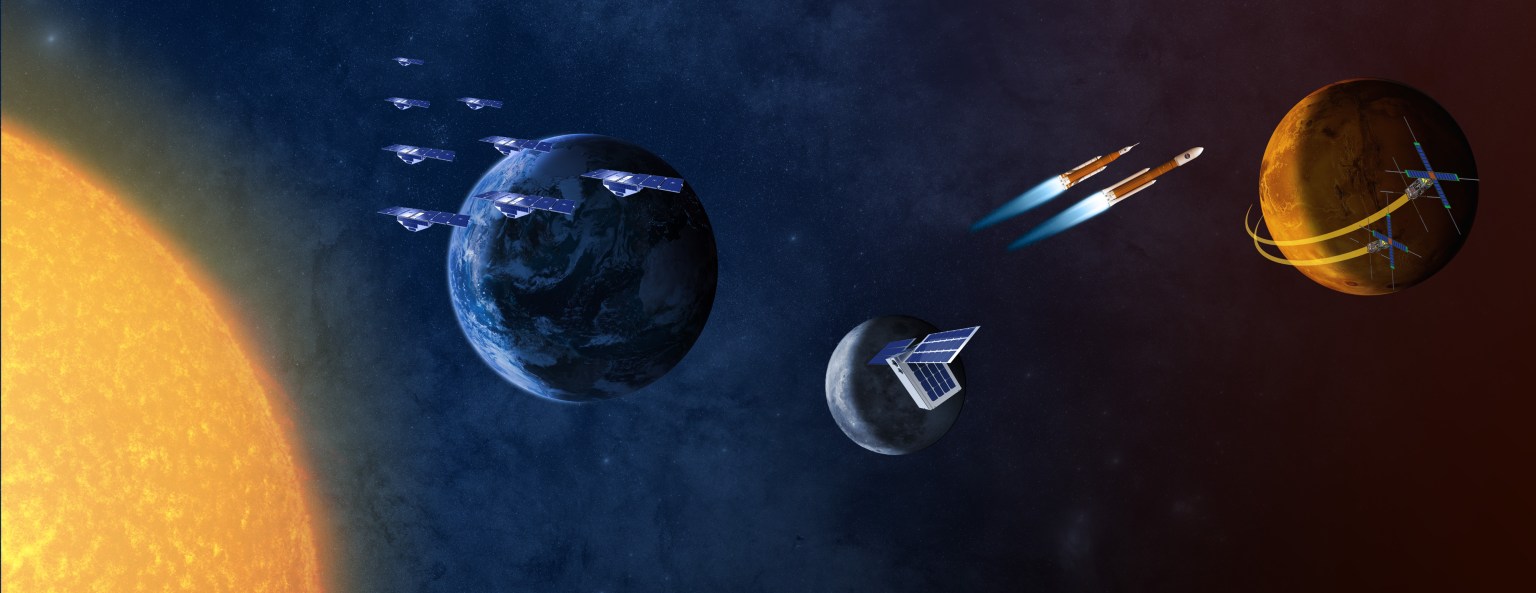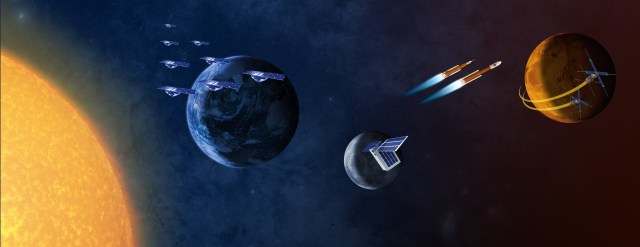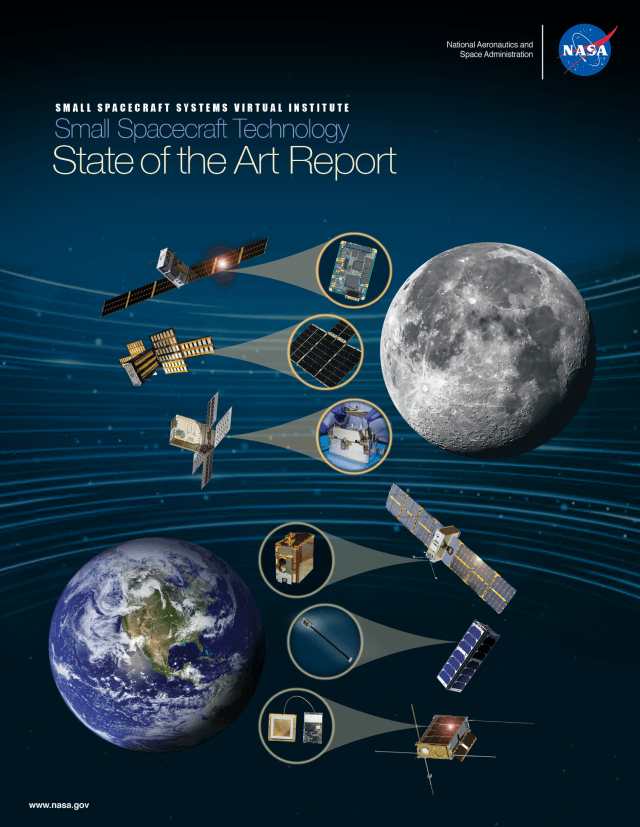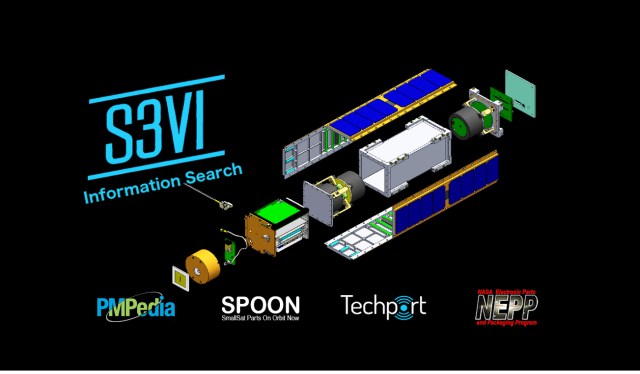Small Spacecraft Community of Practice
Subscribe to receive announcements for the Small Spacecraft Systems Virtual Institute’s (S3VI) monthly webinar series and quarterly newsletter here. We look forward to your participation!

Tether Electrodynamics Propulsion CubeSat Experiment (TEPCE)
Speaker: Matthew Brunner, US Naval Research Laboratory
Wednesday, October 18, 2023
10:00AM-11:00AM Pacific Daylight Time
Click here to download the presentation slides.
Please contact Julianna.L.Fishman@nasa.gov if you experience issues with the audiovisual connection to this webinar.
Abstract: TEPCE was a three-unit (3U) CubeSat that was developed to explore the feasibility of using electrodynamic propulsion for spacecraft. Propulsion is generated by conducting an electric current along a long wire, called a tether, that connects two spacecraft end-masses. As the spacecraft moves along its orbital path the Earth‘s magnetic field induces a Lorentz force between the magnetic field and the electrons in the tether which results in thrust for the spacecraft. It requires no chemical or other traditional fuel source. TEPCE was one of the first self contained electrodynamic propulsion spacecraft.
Biosketch: Mr. Brunner is a native of Lansdowne, Pennsylvania, a borough on the west side of Philadelphia. In 2004 he graduated from the US Naval Academy with a Bachelor of Science degree in Aerospace Engineering and was commissioned as a Naval Aviator and was able to obtain a billet for graduate education at the Naval Postgraduate School in Monterey, CA.
In 2005 Mr. Brunner graduated with a Master of Science degree in Mechanical Engineering from the Naval Postgraduate School with emphasis on validation of computational fluid dynamics using experimental methods in transonic flight. His next assignment was to Naval Aviation Schools Command in Pensacola, FL where he was to begin training as a Student Naval Aviator.
In 2006, Mr. Brunner transferred to the Civil Engineer Corps where he served in multiple program management and leadership roles in Pensacola, FL; Port Hueneme, CA; Sasebo, Japan; and with Multi-Nation Corps-Iraq in Baghdad, Iraq.
Mr. Brunner resigned his commission in May 2010 after 6 years of service to embark on a Civil Service career. He led the multiple facilities branches throughout Yokosuka, Japan and then transferred to Naval Station Annapolis where he led facilities management programs for the US Naval Academy. He transferred to the Naval Research Laboratory in 2017 where he assumed operations and management of the Space Robotics Laboratory. At NRL Mr. Brunner led testbed development and integration including proximity operations simulators, gravity offloading systems, and gravity offset testbeds for satellite system testing. He led programs to develop standards for rendezvous and proximity operations via the Consortium for Execution of Rendezvous and Servicing Operations (CONFERS) and was the lead systems engineer for analysis and studies related to satellite servicing hardware. He was a key member of the Tethered Electrodynamic Propulsion CubeSat Experiment (TEPCE) team where he led ground station development and operations. He specializes in spacecraft design, fluid mechanics, system modeling, and additive manufacturing and prototyping.
Mr. Brunner is currently a registered engineer in Pennsylvania and maintains multiple defense acquisition certification in Contracting, Program Management, and Facilities Engineering. He is a licensed skydiver, an avid photographer, plays soccer, and enjoys long-distance swimming.
S3VI encourages the community to submit questions before the webinar to enable more directed responses. Please send questions to craig.d.burkhard@nasa.gov.





























